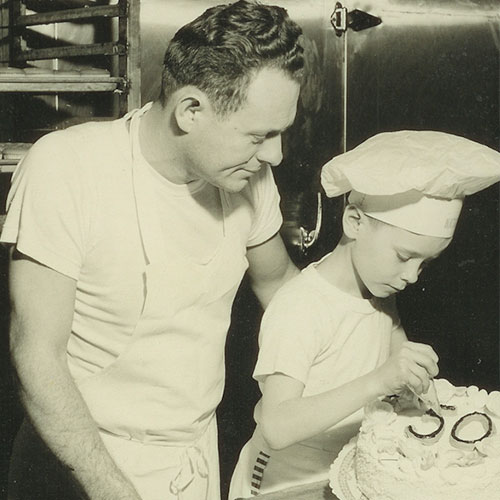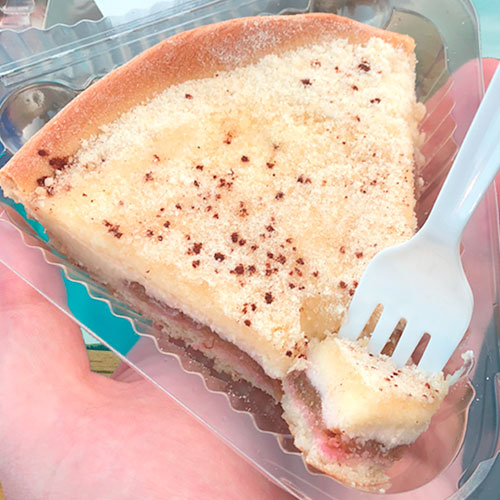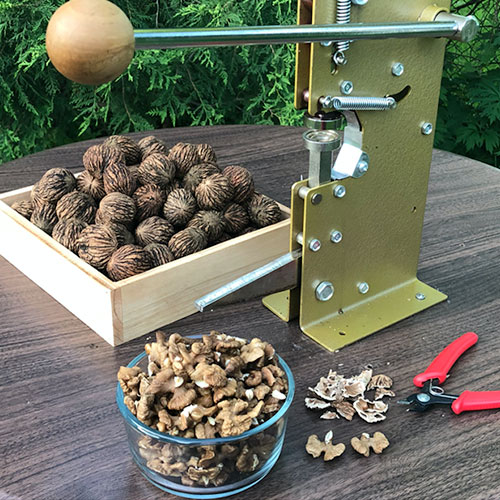Serves 12-16
This cake, like most baked goods, will turn out better if you weigh your ingredients. I’ve provided both weight and volume measures below, but I highly recommend buying a kitchen scale if you don’t have one.
Ingredients
Cake
480 g (3 ½ cups) all-purpose flour
160 g (1 heaping cup) pulverized black walnuts
1 heaping tbsp. baking powder
1 heaping tsp. baking soda
Generous pinch kosher salt
220 g (1 cup, 2 sticks) unsalted butter, at room temperature
400 g (2 cups) granulated sugar
Scrapings from 1 vanilla bean, 1 tsp. vanilla extract, or a splash of nocino
4 eggs
1 ¼ cups apple butter
Frosting and assembly
220 g (1 cup, 2 sticks) unsalted butter, at room temperature
16 oz. (2 standard 8-oz. packages) cream cheese, at room temperature
2 tbsp. milk, plus more as needed
2 cups confectioners’ sugar
Scrapings from 1 vanilla bean, 1 tsp. vanilla extract, or a splash of nocino
Pinch kosher salt
1 cup apple butter
2 cups toasted black walnuts, to coat
Preparation
Preheat the oven to 325°F. Place a rack in the center. Butter and line the bottoms of two 9-inch round cake pans with parchment paper. Butter the parchment.
Combine all dry ingredients except sugar—from flour to salt—in a large bowl and mix.
In a stand mixer fitted with a paddle attachment, cream butter and sugar on medium-high until light and fluffy, 2-3 minutes. Reduce speed to low and slowly mix in vanilla or nocino and eggs. Mix in apple butter. Add dry ingredients to wet and mix until just combined.
Pour batter into pans, smoothing it gently with a spatula. Transfer cake pans to oven and bake 30-45 minutes, until the tops are just dry to the touch and a tester inserted into the center of the cake comes out clean.
When cake is done, let it cool in the pans for 10-15 minutes and then turn it out onto a rack. Let it cool completely—for 3-4 hours—before proceeding. You can then keep the cake in the refrigerator for several days, if you ensure that it is wrapped tightly.
To make frosting, whip butter and cream cheese until light and fluffy. Mix in milk, sugar, vanilla or nocino, and salt, and continue to whip. If frosting is too thick, add more milk.
Use a bread knife to cut any domed or uneven parts off the cakes to make them flat. Place one of the cakes on a platter, cut side up, and frost the top using an offset spatula. Spread the remaining 1 cup apple butter on top, then stack the second on the first, cut side down, and frost the top and sides of the cake. Press toasted walnuts into the cake’s sides. Let sit at least 1 hour before serving.




